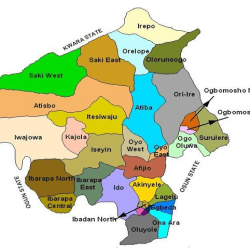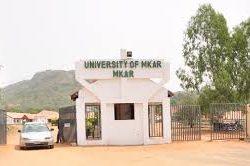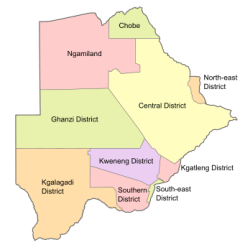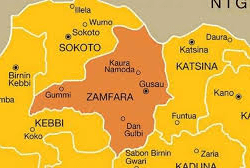Places and their polling stations in Tati West, Botswana
057 Ramokgwebana
0334 Ramokgwebana Primary School
0335 Jackalas I Primary School
0336 Eleven Apostolic Church
0337 SDA Church
058 Moroka
0338 Moroka Primary School
0339 Salvation Church
059 Mapoka-Nlaphkwane
0340 Mapoka Primary School
0341 Batanani JSS
0342 Nlapkhwane Primary School
0343 Malobela Tent
0344 Kgari Primary School
0345 Word of God Church
060 Zwenshambe
0346 Zwenshambe Primary School
0347 Gambule Primary School
0348 Gungwe Primary School
0349 Zwenshambe JSS
061 Mosojane
0350 Mosojane Primary School
0351 Pole Primary School
0352 Mulambakwena Primary School
0353 Masukwane Primary School
0354 Phambuka Ward Kgotla Tent
062 Masunga
0355 Vukwi Primary School
0356 Letsholathebe Primary School
0357 Masunga Primary School
0358 Masunga SSS
063 Kalakamati
0359 Sekakangwe Primary School
0360 Kalakamati Primary School
0361 Mbalambi Primary School
0362 Dembedzi Ward Tent
064 Makaleng
0363 Matenge Primary School
0364 Makaleng Primary School
0365 Legola Primary School
0366 Roman Catholic Church
065 Gulubane
0367 Gulubane Primary School
0368 Sechele Primary School
0369 Mambo Primary School
0370 Masingwaneng Primary School
Reference: iec.gov.bw/index.php/electoral-districts/polling-stations.html
Botswana
Botswana is a country in Africa. It is topographically flat, with approximately 70 percent of its territory being the Kalahari Desert.
It is bordered by South Africa to the south and southeast, Namibia to the west and north, and Zimbabwe to the northeast.
Capital: Gaborone
Currency: Botswanan Pula
Official language: English
Population: 2.588 million (2021) World Bank
Dialing code: +267
Gross Domestic Product: 17.61 billion USD (2021) World Bank
Botswana’s ten districts are:
- Southern District
- South-East District
- Kweneng District
- Kgatleng District
- Central District
- North-East District
- Ngamiland District
- Kgalagadi District
- Chobe District
- Ghanzi District
Botswana’s councils created from urban or town councils are: Gaborone City, Francistown, Lobatse Town, Selebi-Phikwe Town, Jwaneng Town, Orapa Town and Sowa Township.

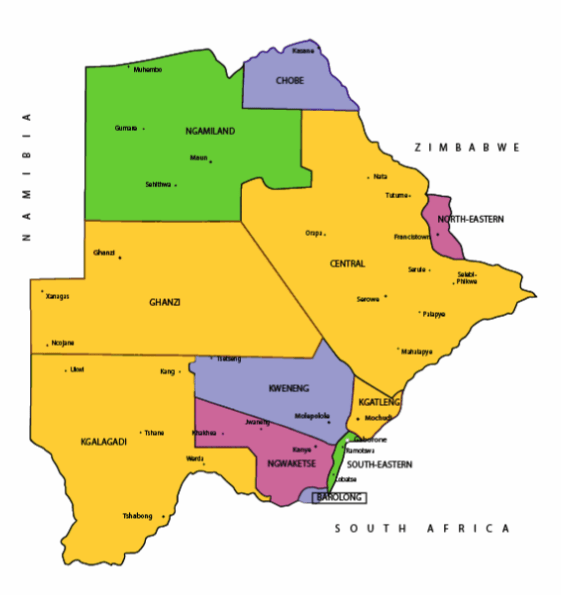




The name Botswana refers to ‘Land of the Tswana’. The landlocked, Southern Africa country is officially known as the Republic of Botswana.














Botswana is connected to Zambia through the Kazungula Bridge making it the world’s shortest border between two countries.
A country of slightly over 2 million people (2021), Botswana is one of the most sparsely populated countries in the world. It is essentially the nation state of the Tswana ethnic group, who make up 79% of the population.

About 11.6 per cent of the population lives in the capital and largest city, Gaborone.
Formerly one of the world’s poorest countries—with a GDP per capita of about US$70 per year in the late 1960s—it has since transformed itself into an upper-middle-income country, with one of the world’s fastest-growing economies.


The Tswana ethnic group were descended mainly from Bantu-speaking tribes who migrated southward of Africa to modern Botswana, living in tribal enclaves as farmers and herders.




In 1885, the British colonised the area and declared a protectorate under the name of Bechuanaland.
As colonisation stopped, Bechuanaland became an independent republic under its current name on 30 September 1966.


Since then, it has been a representative republic, with a consistent record of uninterrupted democratic elections and the lowest perceived corruption ranking in Africa since at least 1998.

The economy is dominated by mining and tourism. Botswana has a GDP (purchasing power parity) per capita of about $18,113 as of 2021, one of the highest in subsaharan Africa.


Botswana is the world’s biggest diamond producing country.
Its relatively high gross national income per capita gives the country a high standard of living and the third-highest Human Development Index of continental Sub-Saharan Africa (after Gabon and South Africa).
The country has been adversely affected by the HIV/AIDS epidemic. In 2002, Botswana began offering anti-retroviral drugs (ARVs) to help combat the epidemic.
Botswana is a member of the Southern African Customs Union, the Southern African Development Community, the Commonwealth of Nations, and the United Nations.
